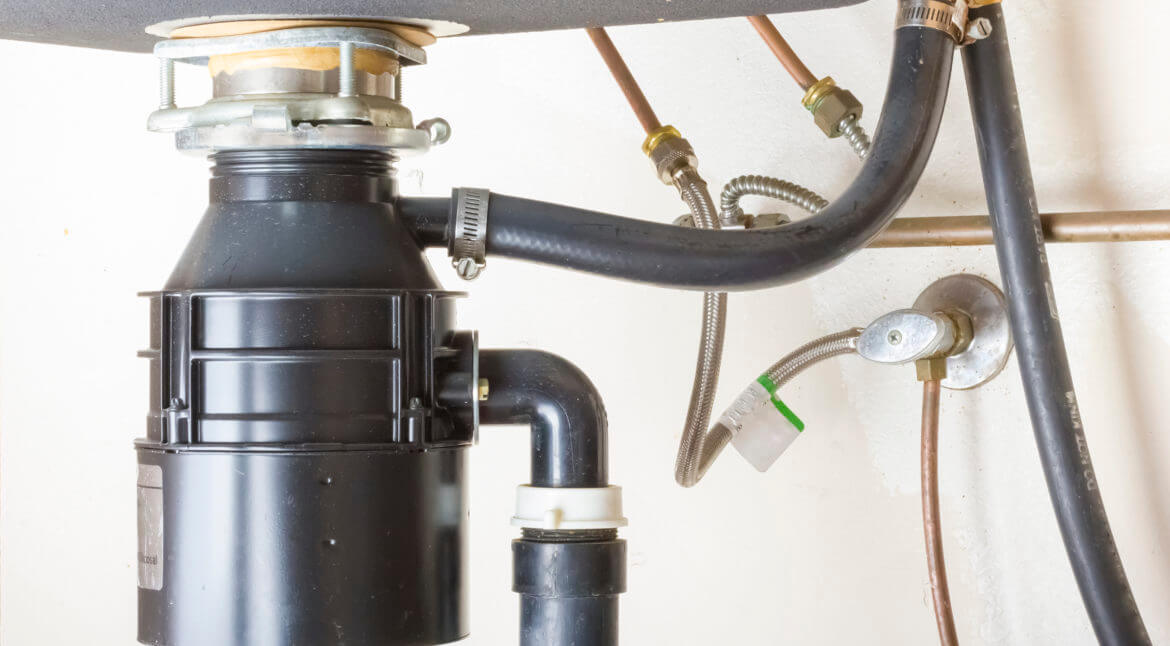A garbage disposal is a handy tool in the kitchen, but it’s not invincible. It isn’t designed to handle all kinds of food scraps. Items like coffee grounds, egg shells and banana peels aren’t meant to go in a disposal. If you are not careful, clogs will inevitably happen, bringing your kitchen sink to an abrupt halt.
Here is how to unclog a garbage disposal in five easy steps.
If these steps don’t deliver success, call Plumbers 911. You will be connected to a licensed local plumber who can unclog your garbage disposal and get your kitchen sink back on track.
1. Turn off the power supply
First, you’ll need to turn off the power supply. Never stick your hands down a garbage disposal that’s still connected. This can result in serious injury. Unplug the unit below the sink or disconnect it at the breaker box. Then you can safely put tongs, broom handles and even fingers down the disposal without fear.
2. Inspect and remove visible items
Once you’ve cut off the power to the disposal, you’ll need to inspect the unit to see what’s causing the clog. You can use tongs, a wooden spoon or a fork to root around, but honestly, fingers often work best. It can be a bit gross down there, so you may want to wear rubber gloves.
Reconnect the power and see if the disposal now works.
3. Use a plunger to remove stubborn food scraps
If the disposal is still clogged, disconnect the power again. Take a sink plunger and go to work on the drain. Food can clog a disposal when it isn’t broken down sufficiently to pass through the drain. Try to loosen any food free and run cold water down the drain. Never use hot water, which can cause trapped grease, fats and other gunk to congeal and harden.
Cover the drain thoroughly with the plunger and plunge the drain several times. If the water starts you drain, you’ve likely cleared the clog.
4. Use baking soda and vinegar to clean the drain
If the drain is still clogged, you’ll need to try a drain cleaner next. Keep in mind that most chemical drain cleaners can damage the plastic components of your garbage disposal. Instead, consider using a mixture of baking soda and vinegar to clean the drain.
Pour a quarter cup of baking soda down the drain, followed by a half cup of vinegar. The mixture should fizz and foam, hopefully pushing the clogged food through the drain. Give it a few minutes to work its way through the pipes. Run cold water down the drain.
5. When all else fails, call a plumber
If the above steps fail to work, you’ve likely got a severe clog. You’ll need to call a professional plumber like the licensed contractors of Plumbers 911. It’s the fastest way to clear a stubborn clog and get your kitchen back on track.
How to prevent future garbage disposal clogs
To prevent future clogs, you’ll need to maintain your garbage disposal and be more careful about what you put in it.
Make sure to run the garbage disposal every day. Food particles can accumulate on the components, which can cause the disposal to freeze up. Run cold water down the drain with the disposal on several times throughout the day. Run it for at least a minute to thoroughly flush out any remaining food particles.
Grind up citrus scraps like lemon and orange rinds to naturally clean the disposal.
Avoid putting large amounts of food down the disposal, as well as coffee grounds, chicken bones and egg shells.


